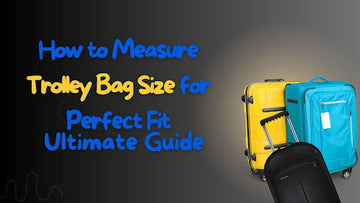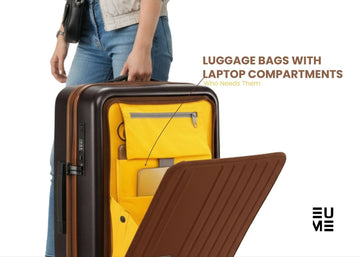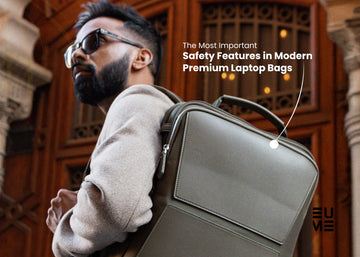Traveling with the right trolley bag can make your journey smoother and more enjoyable. However, finding the perfect fit requires understanding how to measure trolley bag size accurately. This ultimate guide will provide you with all the information you need to choose the right trolley bag, including how to measure it, understanding trolley bags size charts, and knowing what the biggest size of trolley bag is.
Understanding Trolley Bag Dimensions
When it comes to trolley bags, dimensions are crucial. They determine not only how much you can pack but also whether your bag will fit in overhead compartments or under seats on airplanes, trains, or buses.
- Height: Measure from the base to the top of the bag, including the wheels and handle if they are not retractable.
- Width: Measure across the widest part of the bag.
- Depth: Measure from the front to the back of the bag.
How to Measure Trolley Bag Size?
To ensure you have the perfect fit, follow these steps:
- Gather Tools: Use a measuring tape for accuracy.
- Measure Height: Stand the bag upright and measure from the ground to the top.
- Measure Width: Lay the bag flat and measure across the widest point.
- Measure Depth: Measure from the front to the back of the bag.
- Check for Expandability: Some bags have expandable sections. Measure both compressed and expanded dimensions.
Trolley Bags Size Chart
Understanding a size chart can help you choose the right bag for your needs. Here is a general guide:
|
Size |
Dimensions (H x W x D) |
Capacity (liters) |
Suitable For |
|
Small |
18-22 inches |
20-40 |
Short trips, carry-on luggage |
|
Medium |
23-26 inches |
40-70 |
Week-long trips |
|
Large |
27-30 inches |
70-100 |
Extended travel, checked luggage |
|
Extra Large |
31+ inches |
100+ |
Long-term travel, family vacations |
What is the Biggest Size of Trolley Bag?
The biggest trolley bags typically exceed 31 inches in height and can hold over 100 liters. These are ideal for long-term travel or when packing for multiple people. However, keep in mind that larger bags may exceed airline weight limits, so it's important to balance size with practicality.
Choosing the Right Trolley Bag
When selecting a trolley bag, consider the following factors:
- Travel Duration: Short trips require smaller bags, while longer trips may need larger ones.
- Transport Mode: Airlines have specific size and weight restrictions for carry-on and checked luggage.
- Personal Needs: Consider what you need to pack and choose a size that accommodates your belongings comfortably.
Suitcase Sizes and Types
Understanding different suitcase sizes can help in selecting the right one for your needs:
- Personal Item: Fits under the seat in front of you and typically includes small backpacks or handbags.
- Carry On Bags: Usually up to 22 inches in height and fits in overhead compartments.
- Checked Bags: Larger bags that are stored in the airplane's cargo hold.
- Large Suitcases: Ideal for extended trips, but ensure they adhere to airline size restrictions.
Tips for Measuring Trolley Bags
- Check Airline Restrictions: Always verify the size restrictions of the airline you will be flying with.
- Consider Expandability: If your bag is expandable, measure both compressed and expanded dimensions.
- Account for Handles and Wheels: Include these in your measurements to ensure accuracy.
Luggage Size Guide
When shopping for travel luggage, use a luggage size guide to understand the linear dimensions and how they vary depending on the type of bag. This will help you choose the right size suitcases for your travel needs, whether you're looking for Large Size Trolley Bags, Cabin Luggage, or other travel options.
Choosing Between Hard-Sided and Soft-Sided Luggage
When selecting the perfect trolley bag, one of the key decisions you'll face is choosing between hard-sided and soft-sided luggage. Each type has its own advantages and considerations, which can significantly impact your travel experience.
Hard-Sided Luggage
Advantages:
- Durability: Hard-sided luggage often provides better protection for fragile items due to its rigid exterior. This makes it an excellent choice for checked bags, where your luggage might be subjected to rough handling.
- Security: Many hard-sided suitcases come with integrated locks, offering enhanced security for your belongings.
- Water Resistance: These bags are generally more resistant to water, keeping your items dry in wet conditions.
Considerations:
- Weight: Hard-sided luggage can be heavier than its soft-sided counterparts, which may impact your ability to carry it easily.
- Flexibility: The rigid structure means less flexibility in terms of packing extra items or squeezing the bag into tight spaces.
Soft-Sided Luggage
Advantages:
- Flexibility: Soft-sided luggage can be more forgiving when it comes to packing extra items, as the material can stretch slightly.
- Lightweight: Typically, these bags are lighter, making them easier to carry and maneuver.
- External Pockets: Many soft-sided bags feature external pockets, providing easy access to essential items like travel documents or personal items.
Considerations:
- Protection: While soft-sided luggage offers flexibility, it may not protect fragile items as well as hard-sided options.
- Water Resistance: These bags might not be as water-resistant, so consider additional protection if traveling in wet conditions.
Making the Right Choice
When deciding between hard-sided and soft-sided luggage, consider the nature of your trip and personal preferences. If you're traveling with valuable or fragile items, or if your luggage will be checked, a hard-sided suitcase might be the better choice. On the other hand, if you prioritize weight and flexibility, especially for carry-on baggage, a soft-sided bag could be more suitable.
Ultimately, the choice between hard-sided and soft-sided luggage will depend on your travel needs and style. By understanding the pros and cons of each, you can make an informed decision that enhances your travel experience.
Conclusion
Measuring your trolley bag size accurately is essential for a hassle-free travel experience. By understanding how to measure your bag and knowing the size restrictions of your travel mode, you can ensure you have the perfect fit for your journey. Whether you're traveling for a weekend getaway or an extended vacation, the right trolley bag can make all the difference. Explore travel luggage options to find the perfect bag for your next adventure.
FAQs for Measuring Trolley Bag Size: Tips and Guidelines
-
How do I measure a trolley bag for air travel?
Measure the height, width, and depth, including wheels and handles, to ensure it meets airline requirements.
-
What is the standard size for carry-on trolley bags?
Most airlines allow carry-ons up to 22 x 14 x 9 inches, but it's always best to check with your specific airline.
-
Can I use a large trolley bag as a carry-on?
Typically, no. Large bags usually exceed carry-on size limits and must be checked.
-
How can I ensure my trolley bag fits in overhead compartments?
Measure your bag's dimensions and compare them to the airline's carry-on size restrictions.
-
What is the biggest size of trolley bag allowed on flights?
For checked luggage, the maximum size is often around 62 linear inches (height + width + depth).






















